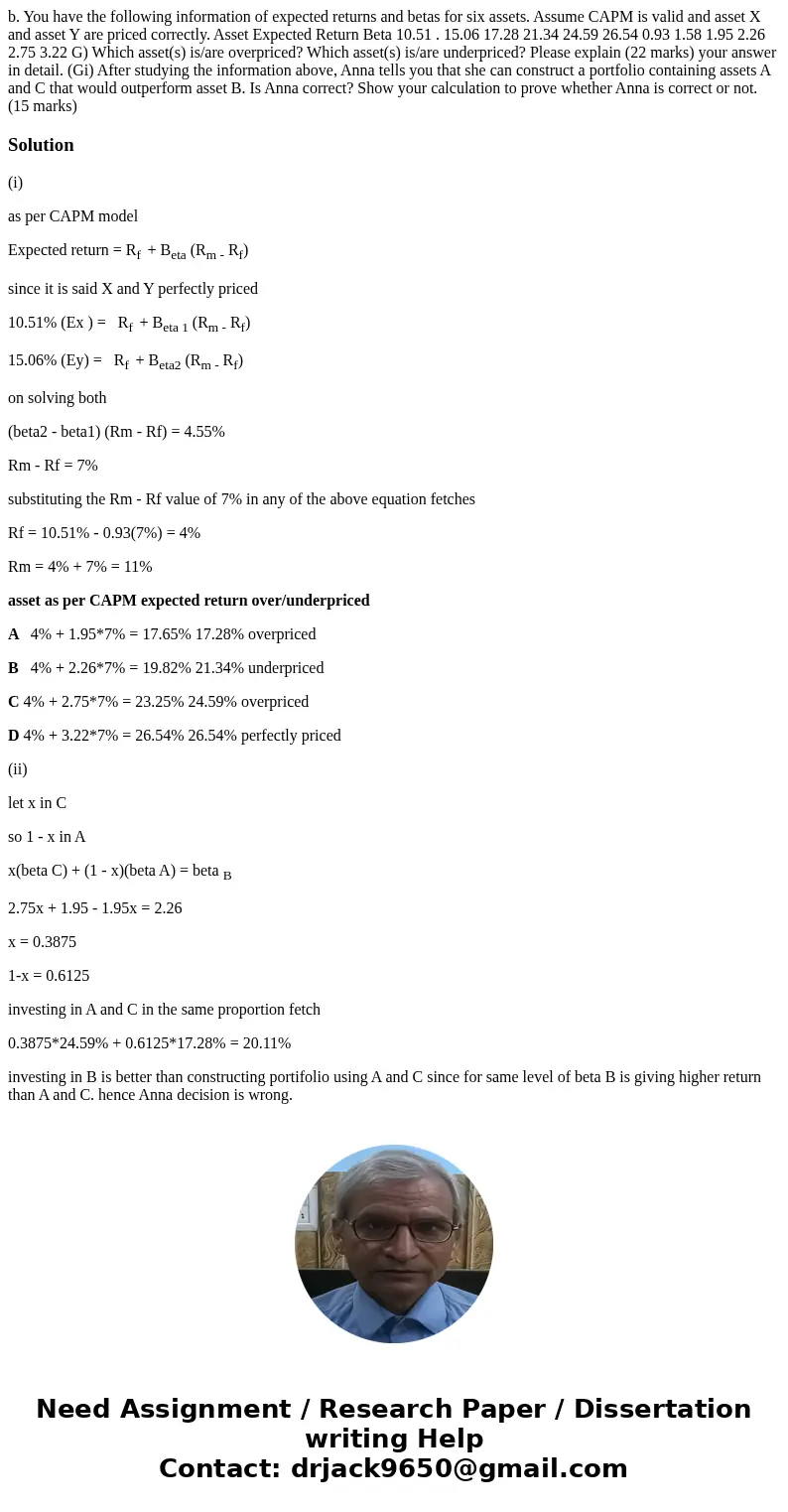b You have the following information of expected returns and
Solution
(i)
as per CAPM model
Expected return = Rf + Beta (Rm - Rf)
since it is said X and Y perfectly priced
10.51% (Ex ) = Rf + Beta 1 (Rm - Rf)
15.06% (Ey) = Rf + Beta2 (Rm - Rf)
on solving both
(beta2 - beta1) (Rm - Rf) = 4.55%
Rm - Rf = 7%
substituting the Rm - Rf value of 7% in any of the above equation fetches
Rf = 10.51% - 0.93(7%) = 4%
Rm = 4% + 7% = 11%
asset as per CAPM expected return over/underpriced
A 4% + 1.95*7% = 17.65% 17.28% overpriced
B 4% + 2.26*7% = 19.82% 21.34% underpriced
C 4% + 2.75*7% = 23.25% 24.59% overpriced
D 4% + 3.22*7% = 26.54% 26.54% perfectly priced
(ii)
let x in C
so 1 - x in A
x(beta C) + (1 - x)(beta A) = beta B
2.75x + 1.95 - 1.95x = 2.26
x = 0.3875
1-x = 0.6125
investing in A and C in the same proportion fetch
0.3875*24.59% + 0.6125*17.28% = 20.11%
investing in B is better than constructing portifolio using A and C since for same level of beta B is giving higher return than A and C. hence Anna decision is wrong.

 Homework Sourse
Homework Sourse